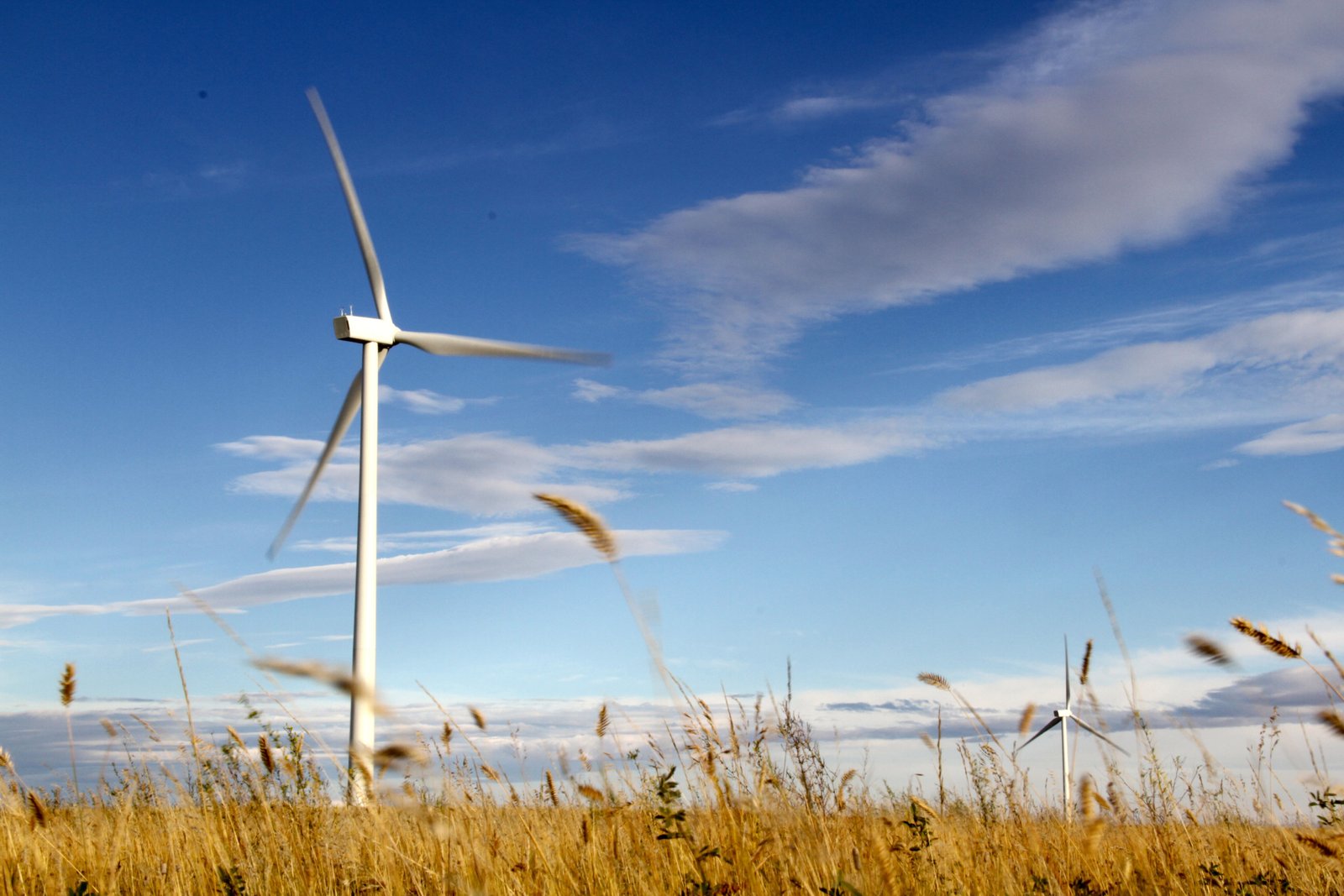By David Dodge and Duncan Kinney
We had another amazing year at Green Energy Futures.
With end of year lists dominated by things like gadgets and movies and music we reflect on our favorite Green Energy Futures stories of 2014.
1. Best example of a fossil fueled city diversifying
“The Gas City” looks to a renewable energy future
In late 2014 we returned to the site of our pilot episode, the small southern Albertan city of Medicine Hat. It’s a place that has made a mint over the years on natural gas – it’s actually called “The Gas City,” but rather than resting on their laurels, Medicine Hat is diversifying into solar and wind energy.
They built the first concentrated solar thermal plant in Canada. It’s a unique project that shows Medicine Hat’s commitment to renewable energy And while the one megawatt solar projects is an important symbol, the city also quietly commissioned six megawatts of wind energy within the city limits, another Canadian first.
2. Best example of industrial symbiosis
Truly Green grows tomatoes using industrial waste heat
We ventured to Chatham, Ontario to tell the story of a greenhouse growing tomatoes using waste heat and CO2 from an ethanol plant across the road. It turns out the ethanol plant (Greenfield Specialty Alcohols) creates a ton of low-level waste heat in the distillation and drying process and instead of just venting it into the atmosphere they’ve set up a pipeline that will send enough heat for 80 per cent of the greenhouses’ heating needs. Truly Green greenhouses are now producing a greener tomato.
“Anytime I am going down the road and I see a stack coming out of a processing plant and I see steam coming out of it I say there is probably an opportunity somebody should be looking at,” says Greg Devries, the president of Truly Green.
Looking at smokestacks as opportunities instead of eyesores is the approach our industrial economy needs to take in a lower carbon, clean energy future.
3. Best example of making solar work in an unlikely place
Alberta farmers pioneer affordable solar energy
Starland County in east-central Alberta is home to about 2,000 farmers and a whole lot of prairie, not exactly the place you would think to look for people on the bleeding edge of solar energy deployment.
But it turns out these farmers are solar innovators. The county started using solar power 10 years ago to move water, a precious and rare resource in these parts, around the county.
Those big pumps come with big electricity bills so they began using solar energy.
It worked so well that in less than a decade the county started working with farmers so they could get solar too. And their projects are paying for themselves in just 10-13 years. The farmer we talked really liked that his system was going to be paid off so soon and this warranty lasted 25 years.
4. Best innovation in green buildings of the last decade
Net-zero builders ramp up net-zero with a go big or go home attitude
One of the biggest innovations in home building of the last 100 years is the advent of the net-zero home. These super energy efficient homes produce as much energy as they consume.
In partnership with the Sustainable Buildings Coalition and Manasc Isaac Architects we produced Chasing Net-Zero a four-part series documenting the rapid evolution of the net-zero home. This was also a favorite with online readers, YouTube viewers and CKUA Radio listeners as well.
The series started with Net-zero 101, where we documented the history of the net-zero movement and its incredibly rapid evolution and we capped it off with Net-zero: Go big or go home by showing how one big homebuilder is close to making every single one of the almost 1,000 homes they build each year net-zero ready.
We also talked about the evolution of net-zero homes from complex beasts to simpler homes more dependent on a well-insulated building envelope and passive solar design. In Net-zero beautiful we discussed the importance of esthetics in solar design and how location can dramatically reduce your energy footprint.
This series showed us a future of solar powered energy efficient homes is already in the works.
5. Best example of low energy food production
A better greenhouse harvests and retains passive solar energy
Take the idea of a greenhouse, borrow some Earthship concepts with some passive solar design and incorporation of thermal mass, and you have a greenhouse that actually works in a northern climate.
We’re talking about the Groundswell Network Society’s greenhouse in Invermere B.C. The greenhouse has an insulated rear wall, a thermally massive floor, solar thermal and solar PV and an annualized geo-solar system that stores heat underground in summer and draws on it in the winter. The result? The greenhouse produces food 10 months out 12 and has a utility bill of only $600 per year.
This story and our uber popular story on rocket stoves are ideas that were incubated in the permaculture community.
It’s been an amazing year and we’re already excited about stories we are working on for 2015. If you’ve got a story idea or have a favourite from the past year drop a note in the comments.
-30-

